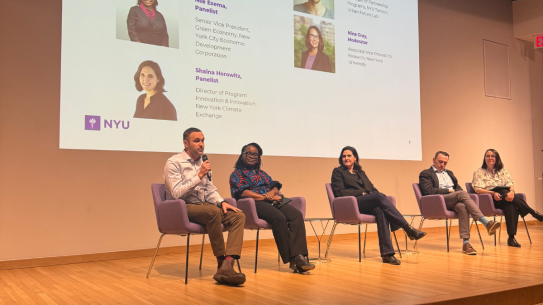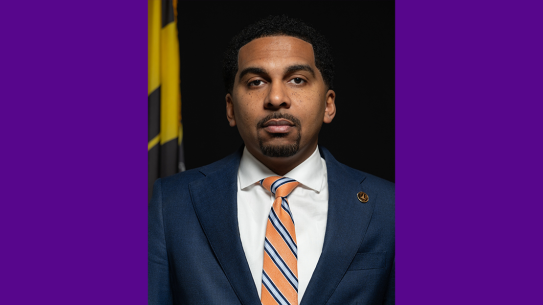Hamed Rahmani wins NSF CAREER Award for pioneering research in wireless integrated circuits and systems for neural interfaces

Hamed Rahmani, Assistant Professor of Electrical and Computer Engineering at NYU Tandon, has been honored with the NSF CAREER Award, one of the most prestigious recognitions for early-career faculty. As a faculty member affiliated with NYU WIRELESS and Tandon’s Center for Advanced Technology in Telecommunications (CATT), Rahmani’s work exemplifies exceptional promise in research and education.
The five-year, $550,000 grant will support his groundbreaking project, "NeuroTap: Chip-Scale High-Resolution Neural Recording with Wireless Communication and Powering." This innovative research aims to develop batteryless, high-resolution brain implants that push the boundaries of neurotechnology, offering significant advancements in medical science.
Q: Could you tell us about your academic background and how you got involved in integrated circuit and wireless research?
A: In 2020, I earned my doctorate in electrical and computer engineering from UCLA, where I specialized in wireless and batteryless System-on-Chip (SoC) solutions for medical implants and IoT devices. That work laid the foundation for transformative biomedical electronics.
Q: Why are integrated circuits and systems so important?
A: Miniaturized chips are emerging as powerful tools in novel sensing, connectivity, and stimulation applications, and integrated circuits and systems are key to revolutionizing neural interfaces and expanding our understanding of the human brain.
Q: What are the critical challenges in the field, and how do you propose to address them?
A: I’m focusing on scaling systems to record data from thousands of neurons simultaneously. The NeuroTap project involves three key areas: Wireless Power Transmission (enabling efficient, batteryless operation of neural implants), High-Throughput Wireless Communication: (facilitating real-time data transmission from brain implants), and Large-Scale Neural Recording (capturing signals from thousands of neurons with unprecedented resolution).
Q: What eventual applications do you envision?
A: There could be broad applications for these innovations, ranging from advancing neuromedicine to enhancing wearable and implantable devices, and the foundational contributions will impact fields like wireless communication, biomedical engineering, and neuroscience.
Q: CAREER Award recipients are chosen, in part, because of their potential to serve as teachers and mentors to aspiring researchers. Does education figure into your project?
A: It’s really a very important element. As technology becomes increasingly complex, interdisciplinary education is crucial. I’ll be participating in the Tandon Center for K-12 Education’s summer Applied Research Innovations in Science and Engineering (ARISE) program, which provides underserved high school students with an authentic research experience in a faculty lab. They’ll be introduced to the theory of wireless, the study of electromagnetic waves, biocompatibility, sensing, and other topics involved in my research.
Q: You are also part of a research project supported by a federal CHIPs Act program aimed at the development of open and interoperable 5G and future-generation cellular technologies. Is there a connection between the two projects?
A: That project is focused on optimizing cellular services within the upper mid-band 7 to 24 GHz frequency range, known as FR3. FR3 offers more data capacity than lower frequencies used in traditional cellular, better coverage than higher frequencies capable of transferring large amounts of data, and is expected to be band hosting many of the next-generation cellular services, 6G and beyond. While this project may seem different from my CAREER topic, advanced integration technologies are the 'bread and butter' for achieving the goals.
Q: You’ve now joined dozens of other NYU Tandon’s engineering faculty members who hold CAREER Awards or similar young investigator honors. Is there something about NYU that makes it such a hotbed for talented researchers and high-potential projects?
A: This is a vibrant academic community with unparalleled strengths in wireless and neurotechnology, and I’m proud to contribute to it.





